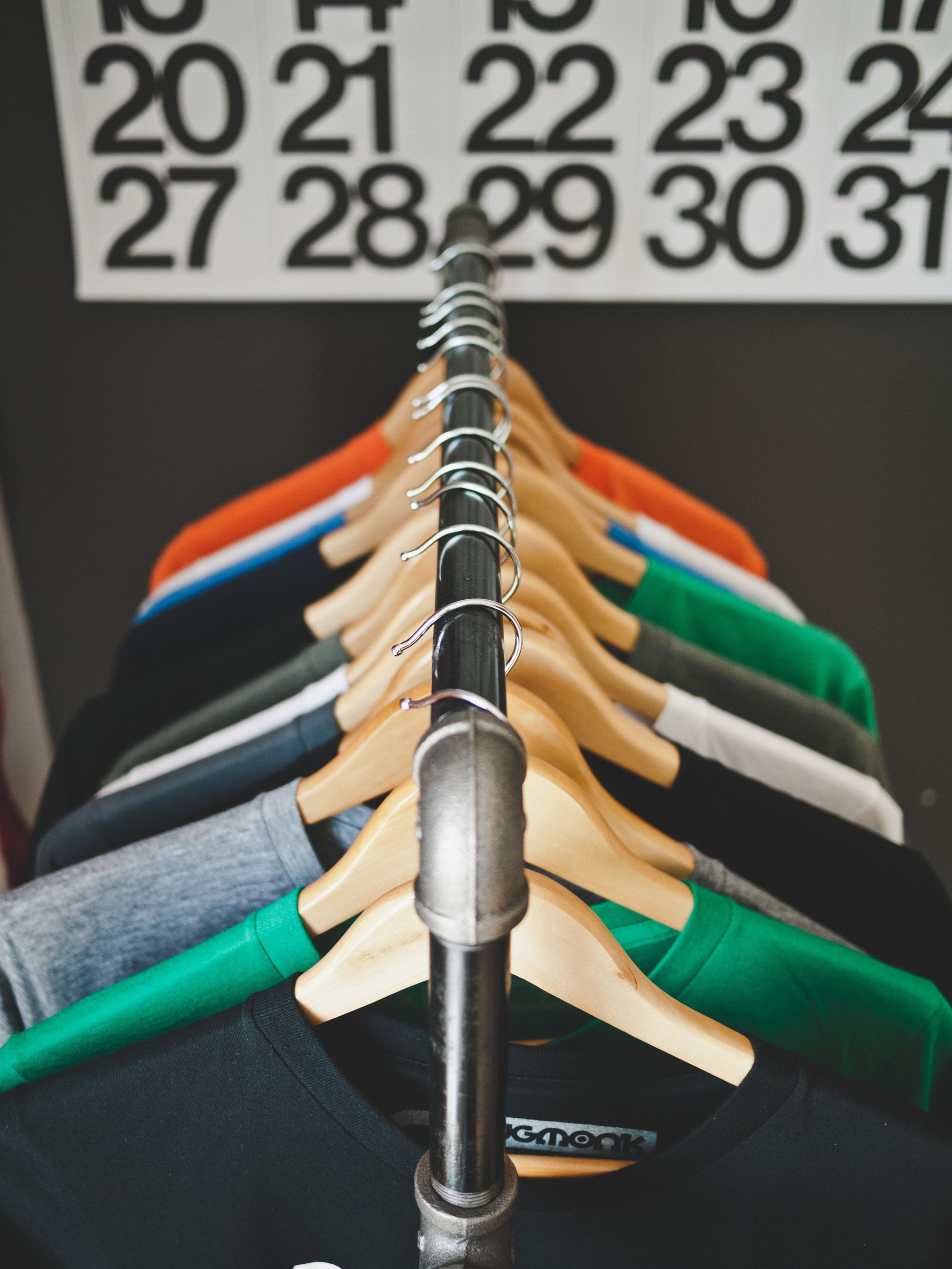When’s the Right Time to Sell Merch? Q&A with Cotton Bureau’s Co-Founder, Nate Peretic
We get a lot of questions from podcasters about merch–when's the right time to start making it? how do you handle shipping it? can you actually make money?–so we chatted with Nate Peretic, co-founder of Cotton Bureau.

We get a lot of questions from podcasters about merch–when's the right time to start making it? how do you handle shipping it? can you actually make money?–so we chatted with Nate Peretic, co-founder of Cotton Bureau.
There is general wisdom that a new podcaster shouldn't attempt to monetize their podcast with advertising or recurring donations for at least 6 months. Does the same apply with merch?
I think that’s mostly correct but with some significant caveats. If the podcast and the brand are the same thing, then absolutely you want to build a critical mass before monetizing. I’ve known some podcasts that have gone years before introducing ad reads and merch. The general equation is the size of the audience multiplied by the enthusiasm or loyalty of the audience. The longer you wait, hopefully,the larger the audience. The enthusiasm part may depend on your own growth as a podcaster, but the earliest adopters are also usually the most enthusiastic. If people are coming to you asking how they can support what you are doing, that’s a great sign. You can also use a few rules of thumb to try to think about whether this is worth doing. Pick a percentage of people that you think you can motivate to at least click through. Let’s say that’s 25% on the high end if you make a good pitch. Then add a conversion percentage for your merch. A good t-shirt will convert anywhere from 3–15% depending on the design, how long it’s available, and price among other factors. Every product is going to convert differently. This is just an exercise to think through whether it’s worth doing from a financial perspective. If you get 1,000 downloads per episodes, you might be able to get 200 of those people to visit the website and of those 20–30 to buy a well-executed product. Of course monetization isn’t the only reason to offer merch. You might just want to make a cool shirt available as a way to promote the show.
What factors should a podcaster consider before they create merch for their podcast?
The logistics of merch can get complicated quickly if you try to do it all yourself. Website design and hosting, merch design and manufacturing, payment processing, fulfillment, shipping, customer service, etc. Luckily people like us have popped up over the last five years that do make it fairly easy to do most or all of those things. Everyone handles it a little bit differently. The biggest thing to think about if you are ready to get started and wanted to work with us is where the design itself is going to come from. Podcast art isn’t always a great fit for a t-shirt. You might need to hit the drawing board or find a friend who can put something together for you. Our number one piece of advice to most people in these situations is to focus on the shared interest of the podcast not the podcast hosts or brand. If you host a show about hockey, the t-shirt design should probably reference hockey and what you love about hockey more than the name of the show or even the show logo/artwork. That can be a challenge, but logo tees generally have a much lower ceiling than something that can stand independently of the show. That doesn’t mean you shouldn’t make a logo tee, but you should at least think about what a creative non-logo tee might look like and whether it wouldn’t be more appealing to your audience.
Does a podcast audience size correlate to the variety of products they make and how much they sell? Are there any examples where a show with a small audience did really well?
In terms of absolute sales, a bigger audience is almost always better. It might go without saying, but if your show has 100 downloads per week and someone else’s show has a million, even if everyone who listens to your show buys a few shirts you won’t be able to hit the numbers that the show with a million downloads can hit if even a fraction of their audience buys. That said, smaller shows seem to have more devoted audiences. Shows with a ton of listeners are often broad topics or things people listen to casually like the news. The Co-Main Event Podcast for example has only 356 reviews in iTunes and sold 1,000+ shirts in 2018.
What type of products would you recommend a podcaster getting started with?
It’s a cliche, but the t-shirt is really the canonical piece of merch. Something small like a sticker or a button can be a nice value-add for a recurring subscription platform, but people love t-shirts.
What costs are associated with getting started?
If you can provide the design, there’s no cost to running either a t-shirt campaign on our site or offering shirts on demand. There are benefits to both approaches. Campaigns concentrate demand into a small period allowing you to promote for a while and then back off after the campaign to let everyone catch their breath. Campaigns also allow you to do batch screen printing which is the highest quality and pass along more revenue to you because of the greater volume. On demand is useful for having shirts available all the time. If you’re shy about promoting, you can do a lot passively with on demand products by just including links in social media profiles and show notes. For products that don’t fit well with pre-order campaigns or on demand, you’re looking at stock which does have some amount of upfront costs. Those costs vary depending on the product. As an example, an enamel pin would have a minimum of about 100 pins and cost around $3–4 per pin.
Ok, so someone has determined they have the audience for creating merch. They have submitted their designs and set up their store. What’s next? What strategies have you seen work well for launch a new product/store/etc?
Ha, well, I suppose there are two main strategies we’ve seen people use and would recommend. These are not in any particular order. The first is a process-driven approach. You might mention that you are thinking about merch and see how your audience reacts. You can follow that up with some behind-the-scenes teases of the designs. You might get samples made and take a few photos of the product in real life. There are any number of ways to build some excitement about the merch before it officially launches. The alternative to that is the surprise drop. There’s something to be said for waiting to say anything until you’re 100% ready to go. With either strategy, merch really only goes as far as you push it. If you’re comfortable enough to get in front of a microphone and record a show that you hope people listen to, you need to be comfortable asking people to support the show by buying merch. For campaigns, we strongly recommend at least a few mentions when the campaign launches, something in the middle, and a strong closing kick. Our campaigns are about 15 days long typically which works really well for shows with a weekly release schedule. If you go with on demand a lot of this goes out the window, but the core advice is still the same: you need to tell people early and often.
Let's get into some specifics around Cotton Bureau's process. How do your customers promote and market their products? Are their products always available? Do they run concentrated campaigns over a period of time?
The easiest thing to get started is to email us! We can walk you through any questions that you have. You can also read up on the process on the site on the How It Works page. We do offer both pre-order campaigns and on demand, so it’s up to you to decide which approach is best. For campaigns, we do also take requests for campaigns to come back, so you can still collect demand even when a product is not actually for sale.
How is shipping and handling managed?
Cotton Bureau manages the shipping and handling process. If your audience has any questions, you can direct them to us via email or social media.
What money can a podcaster earn from merch sales on Cotton Bureau?
For a very successful show the net can easily be over $100,000. Even smaller shows like we’ve talked about can see $10,000+. In general you can make anywhere from $5–15 per shirt. To put it another way, we often see a strong correlation between ad read rates and merchandise sales. It’s very possible to equal or exceed ad revenue from the equivalent time period with a single shirt campaign.
How should Simplecast members reach out to Cotton Bureau if they want to get started?
If you’re ready to go right now, head to the Submit a Design page to get started. If you have questions, just email us@cottonbureau.com.

